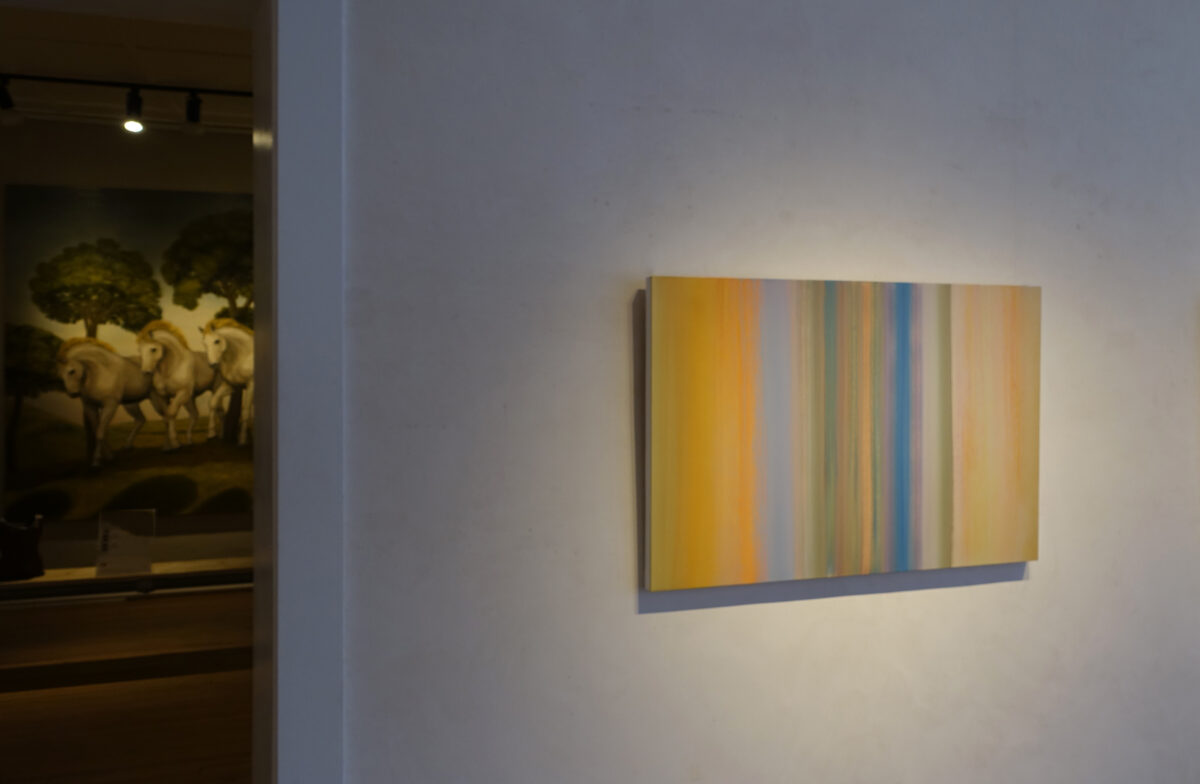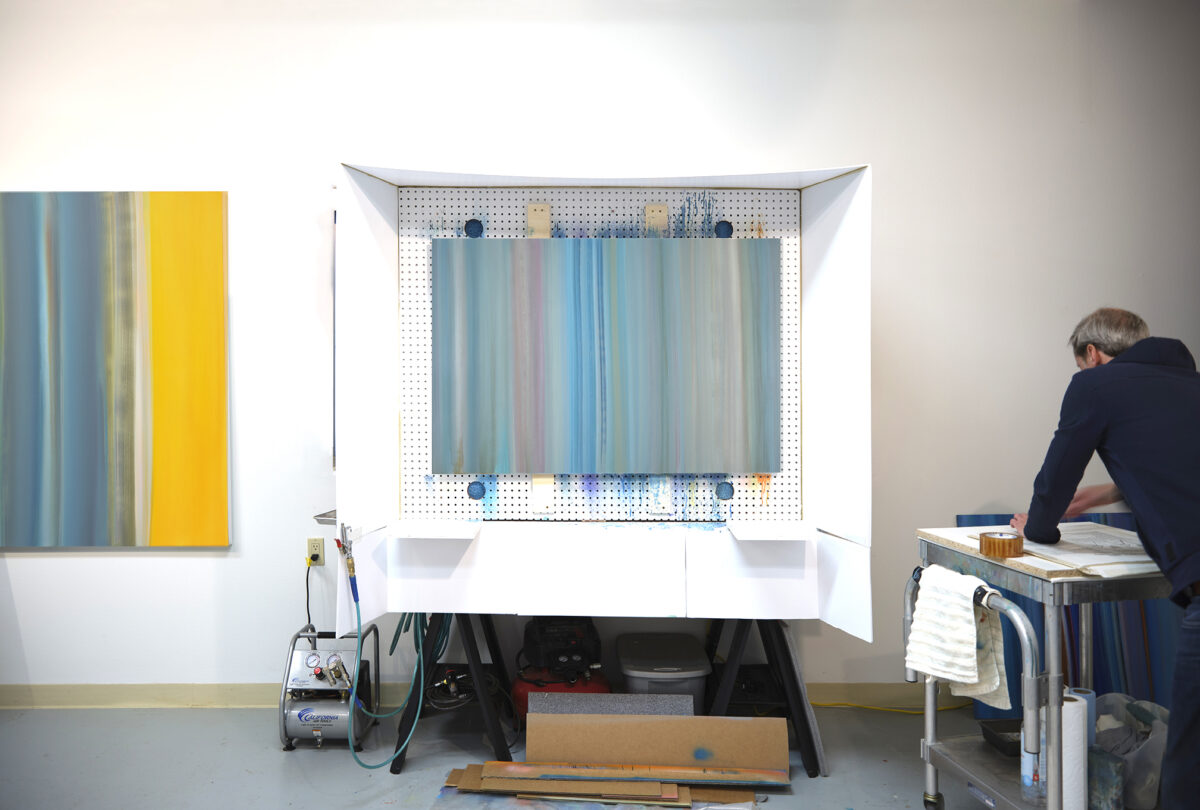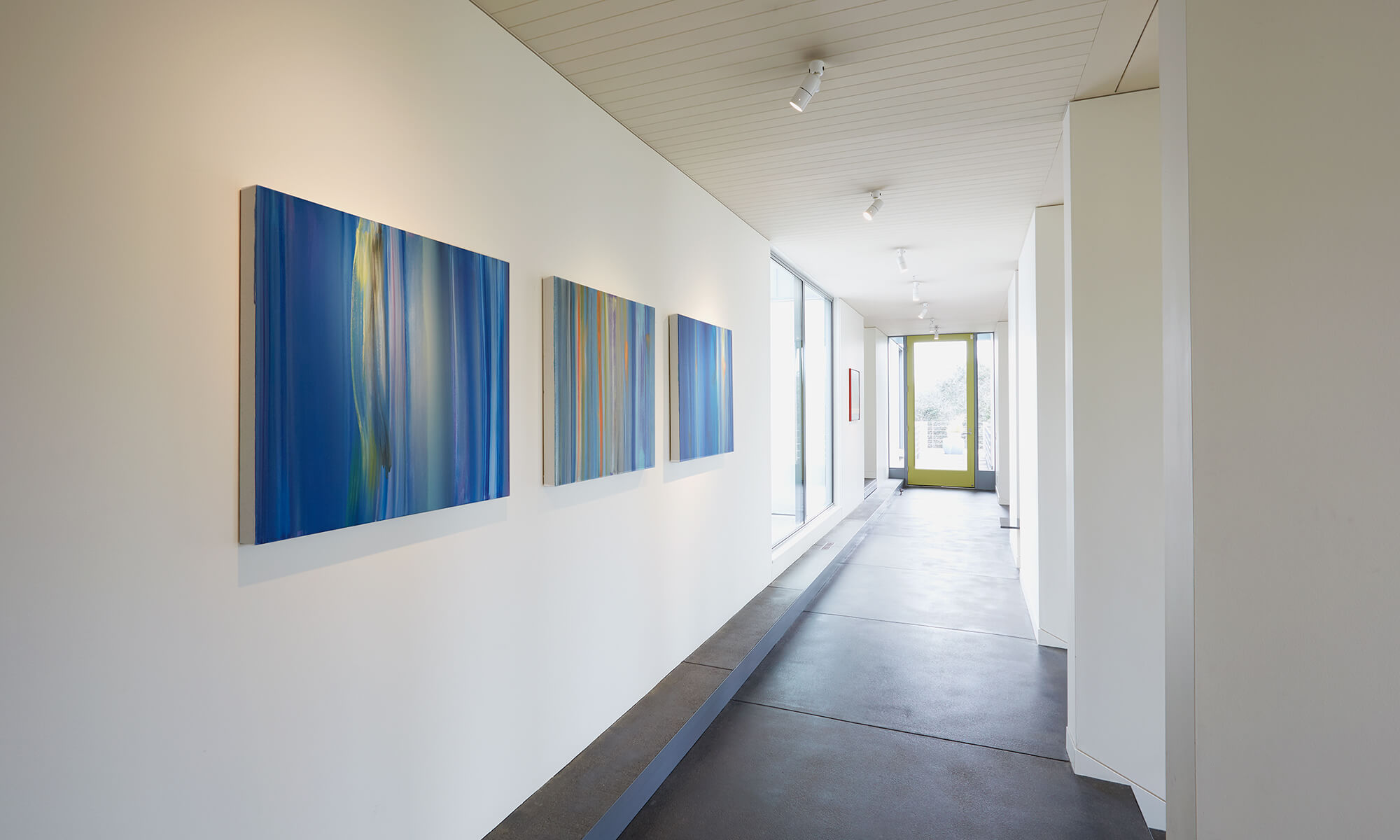Q. How do you see this body of work in relation to past exhibitions?
I am especially excited about this current body of work on the level of process. I’ve been making innovative changes in leaps and bounds over the last 2 years. I began using acrylic airbrush and spray guns for my value studies. These are the first layers that provide structure for subsequent layers painted in oil. The combination of spray gun and brushwork is really starting to come together. I’m doing things I didn’t even know were possible just a few years ago!
Q. Intentional mindfulness and solitude are active, prominent expressions in your work. Abstract sentiments such as these can mean many different things to different people. What do they mean to you in your paintings?
It’s not an accident that early modern humans painted in caves. Painting is inherently solitary. I am inspired by the first cave paintings, to the lush robes of medieval altarpieces, to the inventiveness of the Renaissance, to the destruction and open mindedness of the abstract expressionism, to the return to materials of the minimalism. I seek to navigate through social and political upheaval and blaze a path through historically relevant passageways. To be mindful is to be able to make a stand. To declare, “this is the way! I found a path!”

Q. You have spoken about your work as almost an antidote to the noise and interference of technology. How has this idea evolved over the years as technology has become increasingly infused in many aspects of life?
I love tech in terms of quality of life, communication and access to information. It’s an exciting time! Simultaneously, we collectively make mistakes and misuse or abuse our tools. The recent turbulence in social media and politics is the symptom, not the illness. The illness is not new.
In the late 1990’s I was disenchanted by post-modern thinking and commerce. I wanted to find a painting practice that turned towards immediacy and awareness, without a discursive thought process.
Discursive thinking is a prize in post-modernism. Culturally we are enchanted by the endless chatter, and we collectively mistake this form of thinking as creative activity. This nomadic nature of knowledge is actually a fascination with novelty. “New” doesn’t necessarily bring happiness, though it’s certainly sold that way.
I want to acknowledge that we are really going nowhere, and there is nothing new under the sun. My paintings are meant to defy the chatter. I strive to create vibrating color elements that reverberate across a field. I want to influence space. I want to be whole and make lasting relics of wholeness.

Q. How do you approach color as a tool in your compositions? Where is the line between a more cerebral mapping of each painting’s palette and an energetic or feeling-based impulse?
I love color and the call and response of an all over composition. Colors create attracting power and intriguing spacial effects. Joseph Albers used the term “vibrating boundaries” to explain the effect of colors in close proximity.
It’s difficult to say when the cerebral mapping becomes immediate impulses. Each painting has it’s own transitional moments, yet there is a defining quality to when a painting begins to come together.
I work within a framework that generally develops a composition, yet even the value study is not rote. Sometimes a painting is done when I thought I was just getting started. Sometimes there’s no anchor until the painting comes together all at once.
Q. If there’s one thing you would like collectors to know about your work that you don’t often speak on, what would that be?
I actually have a music playlist for each painting series. So this most recent body of work “Floating World” also has a “Floating World” playlist. I have to warn you though, the music will not play well on most car stereos. The music I’ve been playing recently won’t sound good unless played on a dedicated listening set-up.
Q. Is there a particular piece you are especially drawn to?
“Eastern Gate 20,” currently hangs in the window of Nuart Gallery. It’s the perfect example of a painting that completed itself long before I was ready. After the initial layers of acrylic, I set out to lay down oil and develop a composition over a number of painting sessions. The first and only brush stroke immediately brought the entire painting together in the most unexpected way. I was lucky enough to back off, and ask myself, “can I do that? Is that fair?” It is definitely fair. As it turned out, no work was needed. That painting pretty much painted itself.
It’s not a better painting. It’s just one that speaks perfectly about this aspect of my process, and how I am not the one in charge.

Q. Is there anything else you would like to share on this body of work?
It would be nice to say something about the title of my recent series, “Floating World.”
The term“ukiyo” in medieval Japan was associated with “this transient world”. When written as meaning “floating world” it referenced a release from cyclic existence.
In its modern usage, the term ukiyo is reaching a state of mind that enters a flow state. It is movement in the moment, a temporary release from difficulties and toil.
Image Credit: KIM RICHARDSON
Previous Interview from the Nüart Gallery Editorial 2024:


One Reply to “Interview from the Nüart Gallery Editorial 2024”